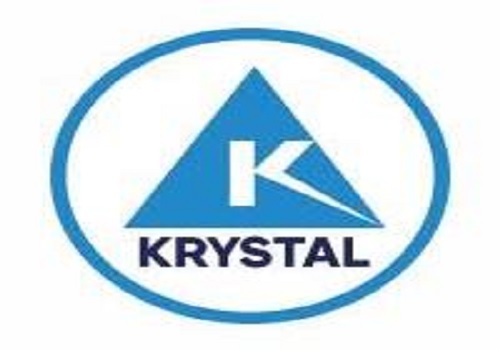First-Time Home Buyer Mistakes: A Guide to Home Loan Decisions

Buying your first home is an exciting journey, but it’s essential to navigate it wisely. One of the critical milestones in this journey is applying for a home loan, which can be a both exciting and overwhelming process.
This comprehensive guide will explore the significance of applying for a home loan and the common mistakes first-time home buyers often make in securing home finance.
Understanding the Importance of Applying for a Home Loan
Applying for a home loan is pivotal for securing your dream home and financial future. At the same time, understanding its importance is crucial too.
Why a successful home loan application is crucial?
Imagine the thrill of stepping into your dream home, where you’ll create countless memories. It’s a milestone that many aspire to achieve, and rightfully so. However, the path to homeownership involves more than choosing the perfect property; it encompasses securing the necessary financing through a home loan.
Grasping the Basics of Home Finance
Before looking into the home loan application process, it’s crucial to grasp the basics of home finance.Home finance essentially revolves around how you’ll fund your home purchase. For most first-time buyers, this means applying for a home loan, also known as a mortgage.
Avoiding the Rush: The Importance of Preparation
Many eager first-time buyers need more preparation to rush into the market. The thought of owning a home can be so attractive that it’s tempting to skip the essential steps required for a successful home loan application
Common Pitfalls
The Credit Score Oversight
Ignoring your credit score is one of the most common blunders in applying for a home loan. Your credit health is pivotal in determining determining your favourable home finance terms eligibility. Before you even start the application process, take time to review your credit report and work on improving your score if necessary.
Skipping the Pre-Approval Stage
Another mistake often made by first-time home buyers is skipping the pre-approval stage. Pre-approval is crucial in the home loan application process as it provides a clear budget and helps you understand what you can afford. Without it, you might waste time looking at homes beyond your financial reach.
Home Loan Shopping
Now, we’ve covered the crucial step of understanding the significance of applying for a home loan and avoiding the common pitfalls. With this knowledge, it’s time to go further into the next phase of your journey: “Home Loan Shopping.”
The Art of Comparing Loan Offers
When seeking a home loan, you’ll come across several choices. Lenders offer a wide array of loan products, each with its own set of terms, interest rates, and fees. This is where the art of comparing loan offers comes into play.
When considering a home loan, the key is to avoid settling for the first offer that comes your way. Take your time to explore multiple lenders and their products. Pay close attention to the interest rates, as even a slight difference can significantly impact your long-term home finance. Moreover, consider the loan terms, such as the duration and associated fees.
Reading the Fine Print
In-home finance, details matter; that’s why reading the fine print during loan shopping is essential. Loan documents can be dense and filled with legal jargon, but it’s crucial to understand what you’re signing up for.
Pay attention to clauses related to interest rate adjustments, penalties, and any hidden fees. Ensure that the terms and conditions align with your long-term financial goals. Don’t hesitate to ask questions or seek legal advice if something seems unclear. The goal here is to avoid surprises and secure a loan that suits your needs.
Preparing for Future Costs
Once you’ve successfully navigated the home loan shopping phase and secured a mortgage that aligns with your financial goals, it’s time to think beyond the initial excitement of homeownership. It would help to prepare for future costs associated with your new home.
Budgeting Beyond the Mortgage
Owning a home involves huge expenses than just the monthly mortgage payment. There are property taxes, insurance, and maintenance fees. It’s essential to budget for these costs to ensure your financial stability.
Building an emergency fund is also crucial. Unexpected home repairs or financial challenges can happen anytime. As such, savingshelps you to handle them without risking your home ownership.
Long-term Financial Planning
Your home is not just a place to live; it’s also a part of your long-term financial plan. Integrating homeownership into your broader financial goals, such as retirement planning, is essential.
Consider how your mortgage fits into your retirement picture. Will you have your home paid off by retirement, or will you continue to make EMI payments? These are vital questions that will impact your overall financial security in the future.
Conclusion
In conclusion, the journey to homeownership doesn’t end with applying for a home loan; it’s an overwhelming process that needs careful consideration and planning. Choosing the perfect home loan involves comparing loan offers from different lenders and meticulously reading the fine print to secure the best deal for your situation.
Preparing for future costs is also essential, as owning a home comes with ongoing financial responsibilities beyond the mortgage. Budgeting for these expenses and incorporating homeownership into your long-term financial plan will set you on the path to homeownership confidence.
Remember, this journey is not just about acquiring a home; it’s about securing your financial future. With the right approach and informed decisions, you’ll find the perfect home and enjoy the peace of mind that comes with a sound home finance strategy. So, continue on this path confidently, knowing you’re making one of the most significant investments of your life, both in your home and your financial well-being.
Above views are of the author and not of the website kindly read disclaimer
























